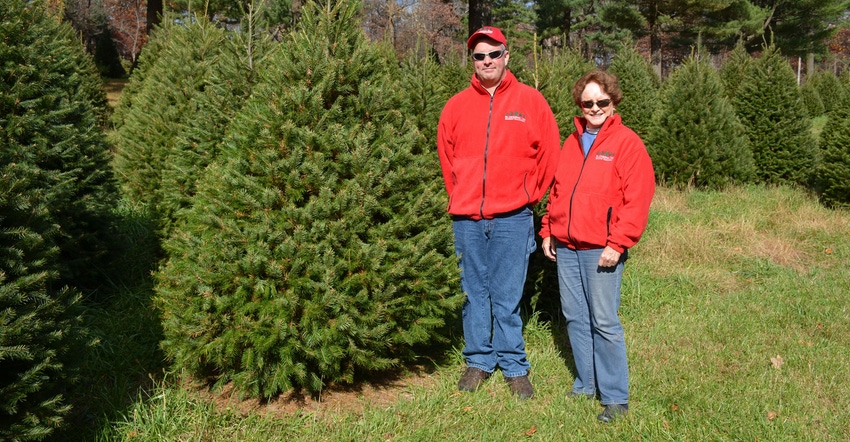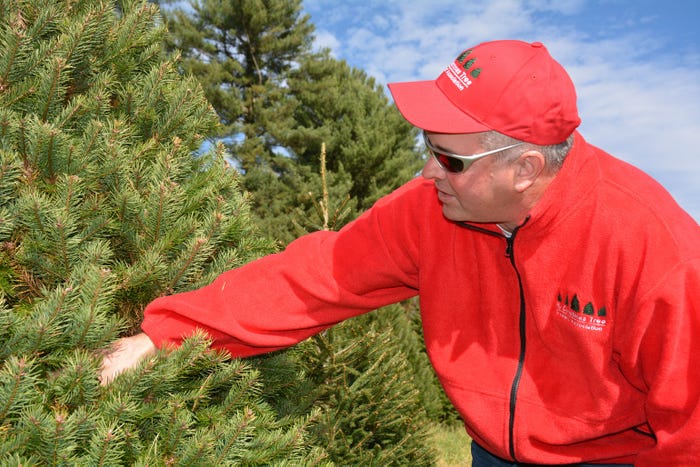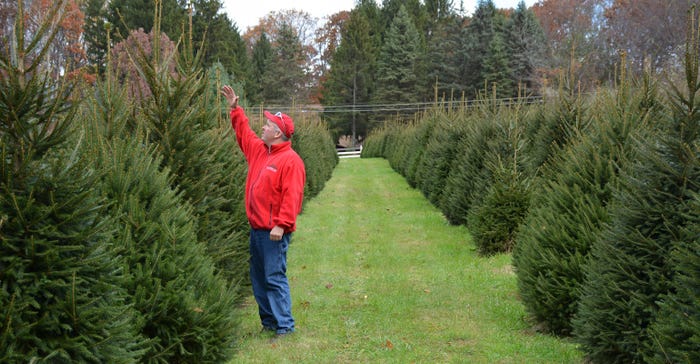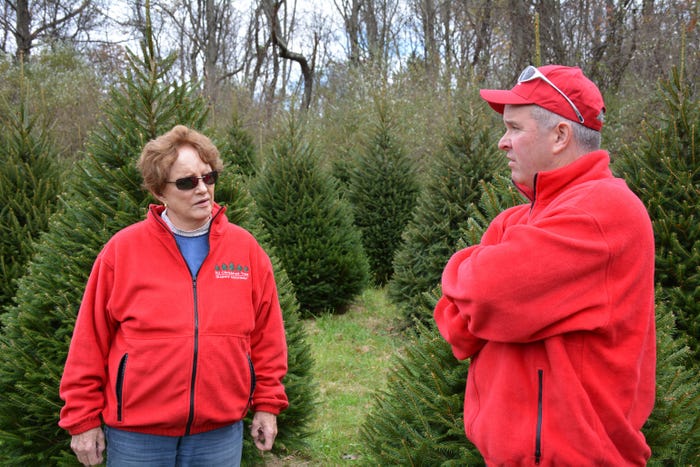
Cole's Country Tree Farm is getting ready for the annual Christmas tree rush. But this year's they're battling a new enemy: public perception.
Andrew and Donna Cole, the mother-son duo who own the small choose-and-cut Christmas tree farm in northwest New Jersey, have been at the forefront of trying to convince people that their trees are safe from the dreaded spotted lanternfly.
"We have not seen one, yet," Andrew Cole says. But the thought of spotted lanternflies in Christmas trees has customers concerned. Last year, a resident in Warren County found spotted lanternfly eggs in a pre-cut Christmas tree. According to NJ.com, the resident didn't notice anything until the eggs hatched in January and spotted lanternflies were flying around in the house.
Donna Cole, who is also executive secretary of the New Jersey Christmas Tree Growers Association, went on local radio recently to try to calm consumers' nerves and urge them to buy Christmas trees from local farms. Andrew Cole says the Warren County tree came from Pennsylvania, where the spotted lanternfly became rampant this past summer.
Time will tell if it will affect business, but the Coles aren't the only ones having to allay customers' fears.
The Pennsylvania Christmas Tree Growers Association has a press release talking about the things growers have done to prevent the bug from invading tree farms.
"We haven't found spotted lanternfly egg masses on any of our trees," says Gregg Eshelman of Plow Farms in Berks County, where the spotted lanternfly was first seen. "Based on our experience and that of other local growers, we also believe that conifers are not a preferred host."
Heather Leach, Penn State Extension spotted lanternfly educator, says the pest lay eggs indiscriminately, so it's possible for eggs to be laid on Christmas trees. But she says this is unlikely because pine trees are not a host for spotted lanternfly.
 NO SPOTTED LANTERNFLIES: Andrew Cole says he has yet to see spotted lanternflies on his farm this season.
NO SPOTTED LANTERNFLIES: Andrew Cole says he has yet to see spotted lanternflies on his farm this season.

She says growers should scout their fields for Tree of Heaven and monitor spotted lanternfly populations in those areas.
"This is the best way we currently know of to be prepared for SLF infestation. If there is a large population on their property, they are more likely to have adults on their trees not as a feeding host, but they'll use trees as a launching point and this increases the chances of having eggs," Leach says.
Ready for the season
Regardless of whether spotted lanternfly eventually becomes an issue, the Coles say they are ready for opening day on Black Friday.
Their 40-acre farm includes Norway spruce, blue spruce, Douglas fir, white pine and canaan fir, along with some concolor firs. They sell between 400 and 500 trees each year, all choose and cut.
It's a change from when the first trees were planted on the farm in 1981. Those Scotch pines were harvested in 1986.
"They were the tree in the '80s," Donna Cole says. "But tastes changed, and people wanted something with better needle retention and shorter needles."
Douglas fir came after Scotch pines, but Andrew Cole says they suffered from needle cast diseases that were difficult to manage. Still, getting away from just one variety, the Scotch pine, was a good thing.
"Every tree has its advantages, some of it's the customer and some of it's the farmer trying to grow a better product," he says.
For example, Norway spruces have heavy, beautiful branches, but needle retention is poor. Blue spruces, though, have better needle retention as well as that iconic blue hue they are known for.
White pines can last until June and have the softest branch of any variety. Cole says they are ideal for making wreaths.
"We grow them all and kind of offer a little bit of everything," he says.
Changes in management
Since it takes several years for Christmas trees to be ready for market, managing the crop is critical to future success. Andrew Cole says he manages his trees in blocks to better manage individual varieties and to have trees at different stages of life. He keeps three generations of each variety in the ground.
But it's taken a long time to get things how he wants.
 READY FOR THE SEASON: Andrew Cole says his mature trees are ready for the expected Black Friday rush later this week.
READY FOR THE SEASON: Andrew Cole says his mature trees are ready for the expected Black Friday rush later this week.

"It's taken me a lot of years to get everything into blocks because you have to clear out those sections that were done that way, which takes a long time," he says. "So, we're finally about done; it's been a 25-year process. It takes more land to do the blocks, that's the problem, and more room. Personally, I have to have the organization."
While spraying is sometimes necessary to control insects and weeds, Andrew Cole has a less-is-better mentality.
"It's time, money, effort, labor to spray a lot, and also you're killing beneficials," he says. "Only when it becomes economically viable to spray will I do it. If I don't have to I don't, and you look for the least toxic, least damaging. So, that seems to help.
"And the best weed control is the mower. It also helps with marketing in the area."
Hoping for success
Even though it's been a wet summer and fall, the Coles say more mature trees can handle the stress better.
"Mature trees hold up better to up-and-down stresses. The problem is when that tree is 1, 2, 3, 4 years old, the stress seems to hit it the most," he says. "And that's where it gets you. You put a couple of years into planting and you have a major problem. You can't get that time back."
 CHRISTMAS TREE COMEBACK: Andrew and Donna Cole say the Christmas tree business in New Jersey has bounced back as people have more money to spend on real trees.
CHRISTMAS TREE COMEBACK: Andrew and Donna Cole say the Christmas tree business in New Jersey has bounced back as people have more money to spend on real trees.

Donna Cole says the Christmas tree business has gotten better in New Jersey, especially since the economy is doing well.
"We had a slump where there was a shortage of trees, but it's coming back now," she says.
About the Author(s)
You May Also Like






